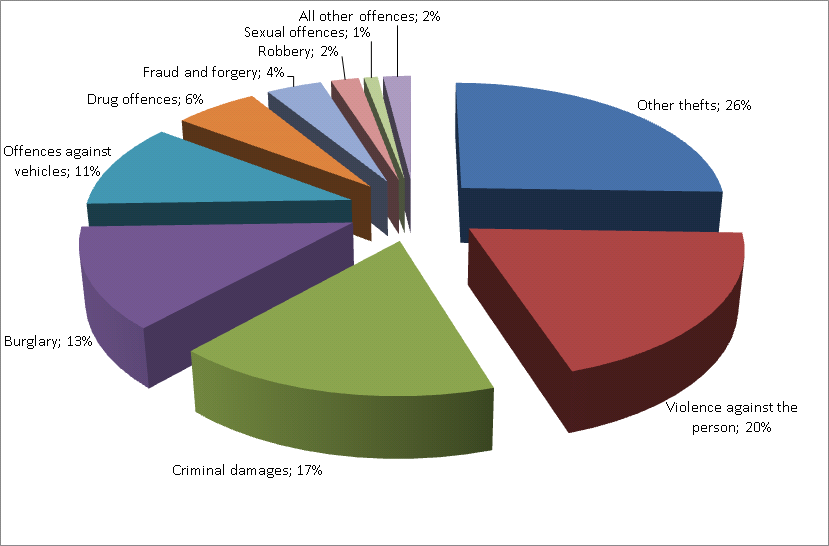Difference between revisions of "Crime"
| Line 4: | Line 4: | ||
==Causes of crime== |
==Causes of crime== |
||
In brief, a criminal event happens when a predisposed, motivated and resourceful offender encounters, or engineers, a conducive crime situation. The situation in turn comprises a suitable target in a favourable environment, in the absence of people who might prevent the crime and the presence of those who might promote it. This has been called the Conjunction of Criminal Opportunity<ref> |
In brief, a criminal event happens when a predisposed, motivated and resourceful offender encounters, or engineers, a conducive crime situation. The situation in turn comprises a suitable target in a favourable environment, in the absence of people who might prevent the crime and the presence of those who might promote it. This has been called the Conjunction of Criminal Opportunity<ref>from: Ekblom, ''The conjunction of criminal opportunity'', http://www.designagainstcrime.com/files/crimeframeworks/06_cco_classic.pdf</ref> |
||
==Types of crime== |
==Types of crime== |
||
Revision as of 14:52, 14 November 2012
Contents
Crime
Crime is the breach of rules or laws for which some governing authority (via mechanisms such as legal systems) can ultimately prescribe a conviction.[1]
Causes of crime
In brief, a criminal event happens when a predisposed, motivated and resourceful offender encounters, or engineers, a conducive crime situation. The situation in turn comprises a suitable target in a favourable environment, in the absence of people who might prevent the crime and the presence of those who might promote it. This has been called the Conjunction of Criminal Opportunity[2]
Types of crime
A uniformly accepted categorisation of crime does not exist; rather, each country uses its own classification and often more than one.
In the context of urban planning, not all types of crimes are equally relevant, due to:
- the extent to which they are infuenceable by means of urban design;
- the extent to which they form a risk, both in terms of likelihood of occurence and impact;
Influenceability of crime by urban design
<to be amended>
Occurence of crime
Not every type of crime occurs equally frequent. The crime statistics of England and Wales of the year 2010-2011[3] present the following ratios in recorded crime types:
Impact of crime
<to be amended>
Security issues
The types of crime that are deemed relevant enough for the urban planning process to be explicitly elaborated in this Securipedia, are called Security Issues. These issues are:
- Burglary
- Ram-raiding
- Pickpocketing
- Robbery
- Vehicle theft
- Physical assault
- Sexual assault
- Vandalism
- Destruction by riots
- Destruction of property by fanatics (terrorists)
- Graffiti
- Mass killing (by fanatics)
- Raid (commercial theft with use of violence)
Footnotes and references
- ↑ from: wikipedia
- ↑ from: Ekblom, The conjunction of criminal opportunity, http://www.designagainstcrime.com/files/crimeframeworks/06_cco_classic.pdf
- ↑ http://www.homeoffice.gov.uk/publications/science-research-statistics/research-statistics/crime-research/hosb1011/hosb1011?view=Binary
MAP
<websiteFrame> website=http://securipedia.eu/cool/index.php?wiki=securipedia.eu&concept=Crime height=1023 width=100% border=0 scroll=auto align=middle </websiteFrame>
<headertabs/>
